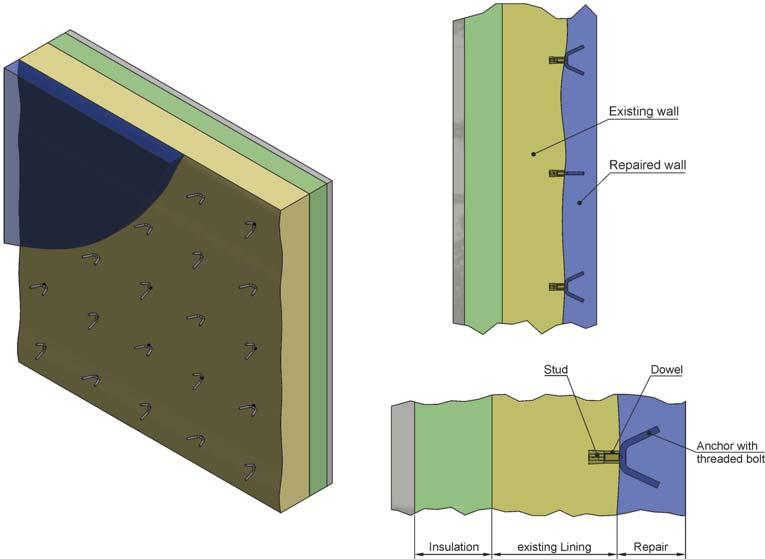
7 minute read
Ready For Rapid Recovery & Repair








Herbert Hoenl, REFKO, explains how successful and long-lasting emergency rotary kiln repairs can be achieved, resulting in safer operation of the kiln until a planned shutdown can take place.

Worldwide, the demand for cement remains at a high level. Modern, more environmentally friendly production methods for cement are increasingly conquering the market. This is leading to a reduction in
‘classic’ cement plants and a concentration on plants that are converted according to the most modern environmental aspects or, in some cases, directly to new kilns. In such plants, higher quantities of cement have to be produced by fewer cement kilns, and a high degree of operational safety is required.
Downtimes must be shortened and kept to a minimum, and unscheduled downtimes must be completely avoided.
In particular, emergency situations, such as sudden hot spots that arise on the rotary tube, have in the past often led to longer unscheduled downtimes in order to replace the worn areas with new bricks. It often happens that in such emergency situations, not enough bricks are available for repair and are not easily procured on such short notice. Plants may also fi nd that there are no skilled or trained installation personnel or required installation machines (e.g. DAT devices) available at the time.
In this case, emergency solutions may be required, such as cooling or other measures in the running process. Not infrequently, however, the continued operation of a kiln with brick damage in the rotary tube then leads to serious subsequent damage, for example deformation of the steel shell, problems in the kiln drive areas, etc. Therefore, the process reliability of the kiln system is at stake.
This is where the REFKO Recovery System comes into play. This material and system development allows a hot spot situation (caused by brick damage) on the rotary kiln to be quickly rectifi ed and enables safer operation of the kiln until a planned, usually annual, shutdown.
The following example will show how a repair was carried out at a hotspot area using a modern designed gunning refractory concrete, based on magnesite/spinel. This led to a short shutdown that allowed the cement plant to operate safely again and without any problems until the next regular and planned annual repair shutdown. The special binding system and selected material composition of the REFKO Recovery System provides a good bond with the existing worn out lining. The installation can be completed with classic dry gunning machines, which are available worldwide.
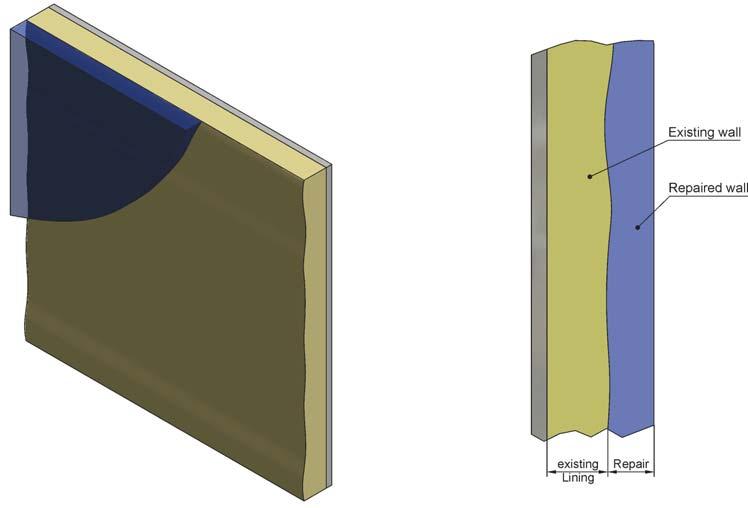
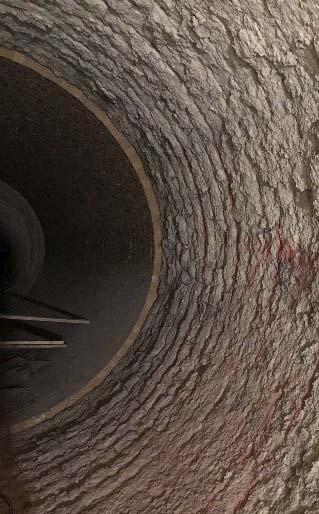
Lining sketch.
Premature wear of MgO/Spinel bricks. Case study
In the area of the burning zone, in a kiln with a length of approximately 60 m and a diameter of approximately 4 m, a premature wear of the MgO/spinel bricks occurred. The affected areas were cleaned well with compressed air. All loose adhesions and dust deposits were also removed as much as possible by this process. Further pretreatment of the worn brick lining may also be necessary in cases such as these, depending on the damage pattern. The repair areas prepared in this way are usually divided into installation fi elds. Depending on the desired layer thickness, the use of anchors can also be considered. This must be decided individually ‘on site’. REFKO does not recommend gun layers below 5 cm thickness.
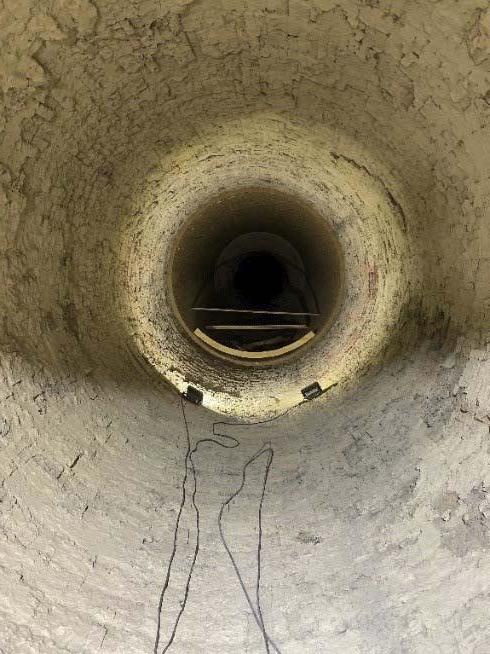

Sketch of a rotary kiln.
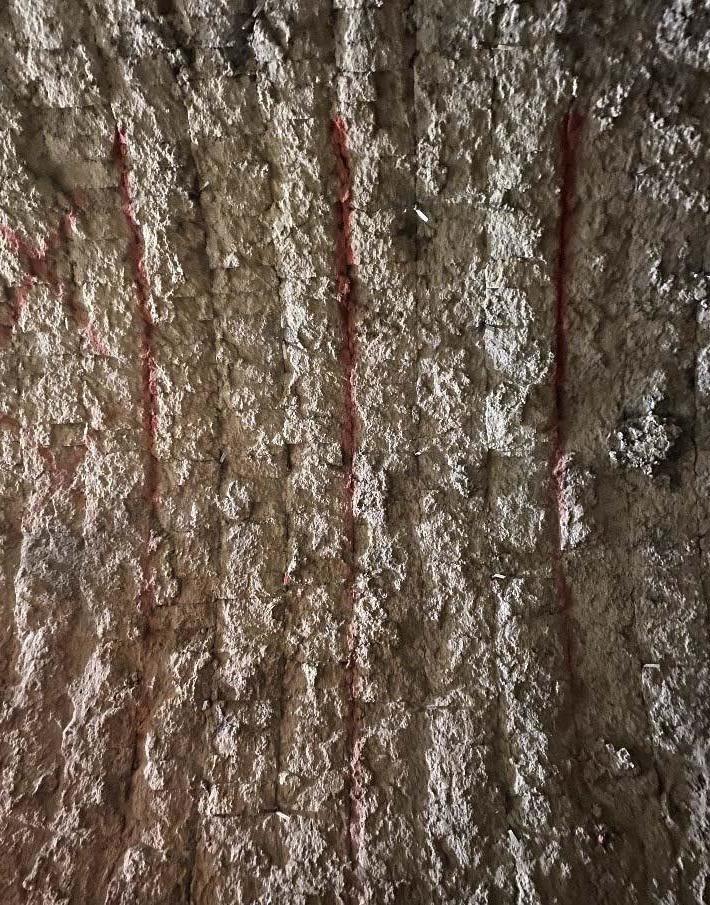
Cleaned surface and marking of the installation fi elds.
Example of a commercially available dry gunning machine.
The installation fi elds are separated from each other by working joints and the joints should follow the stone joints. This is necessary to give fl exibility to the mechanical loads in the heating up and operational phase, as well as the thermal expansion of the monolithic layer. To achieve optimal mechanical stability, complete rings should always be gunned. The selective repair of damaged areas is not advisable.
The gunning of the REFKO Recovery MG concrete was carried out in this case with a commercially available dry- or respectively rotor-gunning machine. These machines are in use worldwide and can be easily organised for emergency repair work.
The REFKO Recovery products do not require any special machines that can only be operated by specialists.
The only special feature is the use of a high-pressure membrane spray nozzle, or the ‘REFKO nozzle.’ In combination with a high-pressure water pump, a practically dust-free gunning installation can be achieved and this special refractory concrete can be gunned with good results.
The REFKO nozzle and high-pressure water pump are now standard in many cement plants and installation companies. If, however, no REFKO nozzle and/or high-pressure pump are available, equipment will be provided by REFKO. Also, during the fi rst installation of one of REFKO’s technical service co-workers will always be on site.
After setting, the concrete developed a stable connection with the subsoil, so that the furnace could be turned to the next mounting position without any problem.
REFKO had to deal with very low outside temperatures, but even under these conditions, the concrete could be safely installed. 24 hours after completing the gunning, the kiln was ignited again. The binding system of the REFKO Recovery MG System also allows for a quick restart of the furnaces. Furnaces can be heated according to the respective plant-specifi c specifi cations for re-starting.
The heat-up to operating temperature and the fi rst material feed in the repaired area went ahead without any problem. No material spalling was detected in the kiln during the start phase.
After reaching the operating temperature, the repaired zone was monitored with thermal cameras throughout the whole
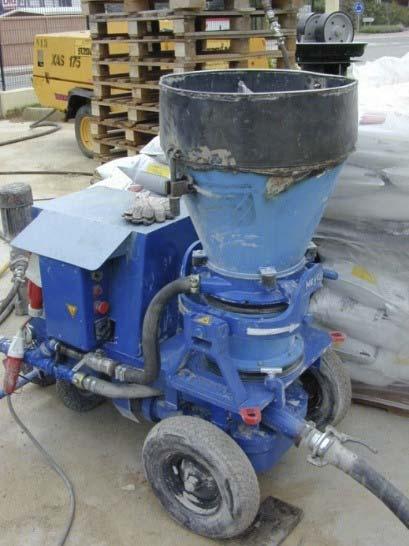
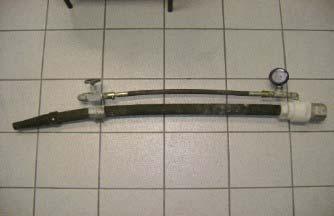
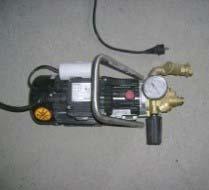
kiln journey. At no time were new hotspots detected in the repaired area.
After almost four months it was time for the annual, planned shutdown of the cement kiln.
The repair area was still completely preserved. A sintering connection with the subsoil could be detected in the post-mortem samples. No larger or more problematic formations of build-ups were detected. If a planned shutdown had not taken place, the repaired area could have lasted much longer.
The cement plant operator was satisfi ed with the repair using REFKO Recovery. The REFKO Recovery product and system range is made up of products for quick repairs in all hot areas of a cement kiln. Like for the rotary tube repair described above, REFKO Recovery products can be applied to the worn-out areas. The insulating kiln layers can be completely preserved. As a result, less material is required for the restoration of the desired wall thickness than with a completely new installation. There is also likely to be less outbreak material.
The type of repair and installation described in this article uses a resource friendly method. This method also signifi cantly lowers expenditure on demolition- and installation-times. REFKO Recovery ZSI solutions can also be heated quickly, at up to 75˚C/h without holding times. This means that the kiln can be quickly put back into operation after a repair.
About the author
Herbert Hoenl is Managing Director at REFKO Feuerfest Gmbh. Herbert studied Materials Engineering at the Koblenz University of Applied Sciences, and graduated as Dipl.Ing (FH). Herbert has worked at REFKO Feuerfest GmbH for 30 years. He started in the R&D and QM department and has since remained personally involved in the development of new refractory materials, product concepts, and technical solutions. He is also boardmember of the DGFS (Deutsche Gesellschaft Feuerfest- und Schornsteinbau e.V. /German Association of Refractory & Chimney Contractors).
REFKO nozzle and high-pressure water pump. Almost dust-free gunning of REFKO Recovery MG (left) and repair zone after installation (right). Sketch of lining, with insulation and anchors.
Results
With the REFKO Recovery MG products based on Mgo/Spinel, successful and long-lasting repairs can be carried out in the rotary kiln area.
Together with the REFKO Recovery products for the static areas of a cement kiln, a product and system portfolio is available which optimally meets the modern requirements for safe and fast repairs.
These modern product developments show that by repairing existing lining, breakout is avoided and less ‘fresh’ material is needed. In addition, savings can be made due to lower assembly costs.
New developments in the fi eld of monolithic refractory materials can save resources and can represent a small step in the reduction of the cement industry’s CO2 footprint.

